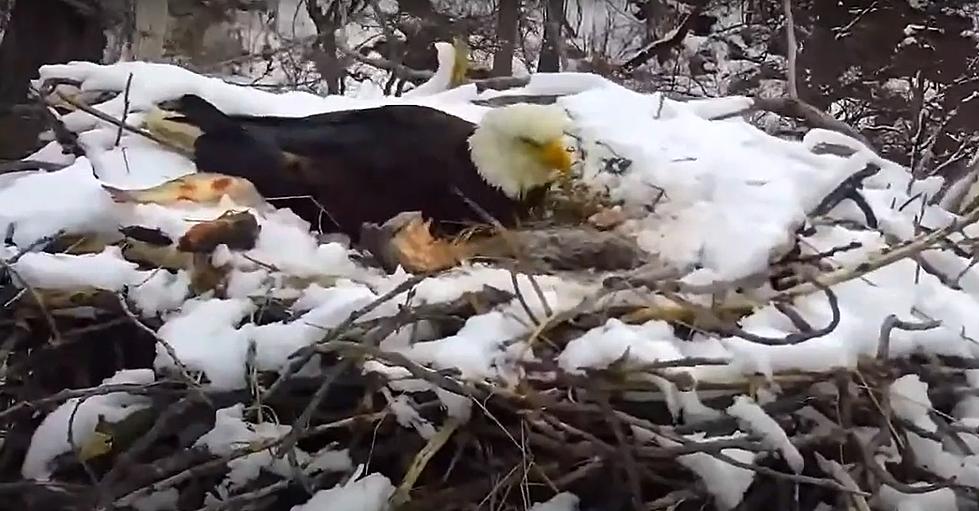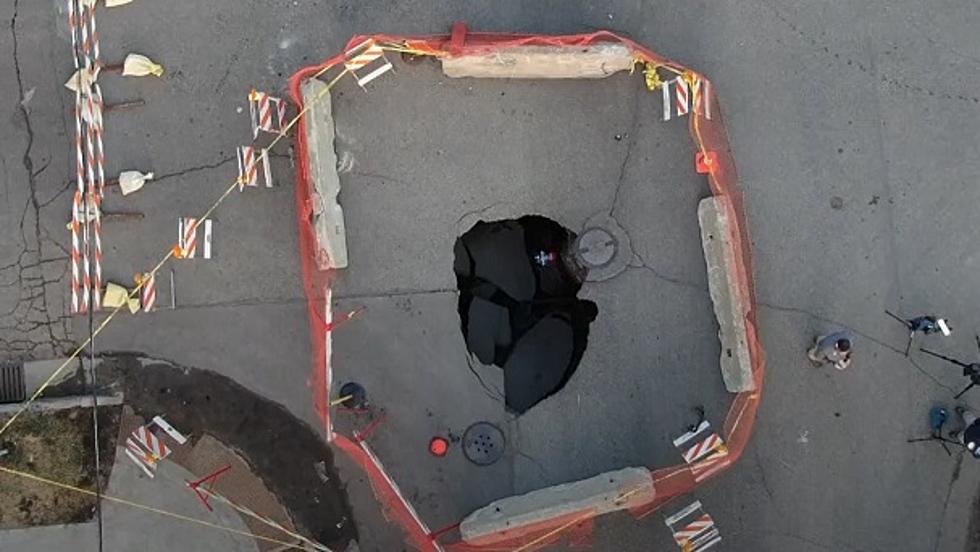
WATCH: Minnesota DNR EagleCam Falls From Tree; DNR Provides Sad Update
The Minnesota Department of Natural Resources EagleCam, which is presented by the Minnesota Nongame Wildlife Program, has been captivating people from across the country for quite some time. That was especially true when the first egg was spotted in the nest on February 15, 2023.
Shortly thereafter, a second egg was discovered. Unfortunately, that second egg ended up breaking, leaving the eagles just one to take care of, which they did through the worst of winter weather.
Good news arrived on March 27, when the DNR announced the lone egg had hatched:
Minnesota DNR Nongame EagleCam egg has hatched! We have the new star of 2023! This single chick will be one well-cared-for eaglet. The egg hatched on 3/26 sometime in the afternoon.

However, just a week later, tragedy struck. It seems that all the snow and strong winds were just too much for the eagle's nest and on the morning of Sunday, April 2, it fell from the tree. That shocking moment was captured on the EagleCam, leaving everyone stunned
Of course, everyone wondered what had happened to the eagles when the nest fell, especially the chick. The Minnesota Nongame Wildlife Program provided an update on the situation Sunday morning on its Facebook page. It was news nobody wanted to hear:
Update: We have found the chick. It did not survive the fall. If you know where the nest is, we ask that you refrain from visiting.
We wish we weren't writing this post, but the EagleCam nest fell out of the tree early this morning. Staff are onsite assessing the situation. We will give another update when we have more information.
Their Facebook page was then flooded with comments, with everyone mourning the loss of the chick and offering condolences on the tragic turn of events.
LOOK: Stunning animal photos from around the world

LOOK: 30 fascinating facts about sleep in the animal kingdom
More From Hot 104.7 - KKLS-FM








![Midwest Family Teaches Pet Pig How To Ride Around Town [VIDEO]](http://townsquare.media/site/675/files/2023/03/attachment-pig1.jpg?w=980&q=75)
